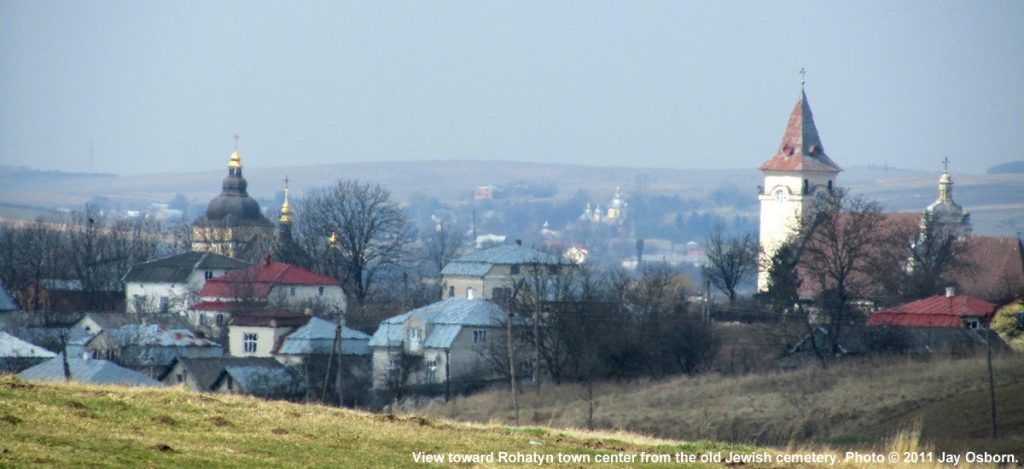Nash Holos: Rohatyn
Rohatyn is a city located on the Hnyla Lypa River in the Ivano-Frankivsk Oblast, in western Ukraine. It is the administrative center of the Rohatyn Region.
It was first mentioned in historical documents in 1184 as a part of the Kingdom of Galicia–Volhynia. On the town’s crest is the horn of a deer, which may explain the first part of the city’s name. The Ukrainian word for horn is “Rih.” Many deer live in a nearby forest.
Today Rohatyn remembers its Jewish history and past eras. This is due in large part to local historian and retired teacher, Mykhaylo Vorobets. On a recent visit to Rohatyn, I was happy to meet this amazing man.
Vorobets was born in 1934 in a village near Rohatyn. He devoted his life to teaching children at a local school. Although he retired last year, students still come to his house.
During his lifetime, he collected and compiled information about Rohatyn. He interviewed older people, visited archives and libraries for research, and has written many articles.
People often will bring him old maps, photos, and documents because they know he is interested in history.
His work is well-known in the town. Whenever strangers come to town looking for information from the past, locals direct them to Vorobets. That was how I found him.
Vorobets told me about the first Nazi atrocity in Rohatyn. He was just a boy of seven when the Nazis murdered a large number of the city’s Jews. He recalls his father’s compassion and how sickened he was at the sight of two big holes filled with dead bodies.
Two mass graves are located in different parts of the city, as well as two monuments to the Nazis’ victims.
Rohatyn still has two synagogues. During the Soviet period, one of them housed a bakery and is now a warehouse. The other houses a Centre for Children’s Leisure Activities. At this site is a memorial plaque commemorating the Jewish community that lived in the city for 600 years and was completely destroyed by the Nazis in the years 1941–1944.
Also, Rohatyn has two Jewish cemeteries, an old one and a new one. Unfortunately, all that is left today are the remains of Jewish tombstones.
The old cemetery is located next to one of the oldest wooden churches in the region and its adjoining Christian cemetery. Only a few headstones remain in this cemetery. But there is a monument dedicated to Holocaust survivors who come from Rohatyn. It was put up in 1998.
Also, there is an ohel, a structure built over a Jewish grave signifying the prominence of the person buried within. Ohalim range from small wooden, brick, or plaster structures to large buildings which include one or more graves, an area for visitors to sit and meditate, and a tombstone with a Torah.
People with Jewish roots visiting Rohatyn are always happy to find someone who remembers the city’s Jews and honours their memory. They often become friends with Vorobets, who is now responsible for all the Jewish sites in Rohatyn.
The new Jewish cemetery was destroyed by the Nazis. Recently, however, a woman named Marla R. Osborn, who has been researching her family history in Galicia, created the Rohatyn Matsevot Memorial Project. The mission of the project is to preserve newly discovered gravestones and to commemorate ancestors who were buried in Rohatyn’s Jewish cemeteries.
Hear more about Marla and her project in the next episode of Ukrainian Jewish Heritage on Nash Holos Ukrainian Roots Radio.
Until next time, Shalom.
Narrated by Renata Hanynets
Faina Petryakova Scientific Centre for Judaica and Jewish Art
Lviv, Ukraine.
Listen to the program here.
Ukrainian Jewish Heritage is brought to you by the Ukrainian Jewish Encounter (UJE), a privately funded multinational organization whose goal is to promote mutual understanding between Ukrainians and Jews. Transcripts and audio files of this and earlier broadcasts of Ukrainian Jewish Heritage are available at the UJE website and the Nash Holos website.




















